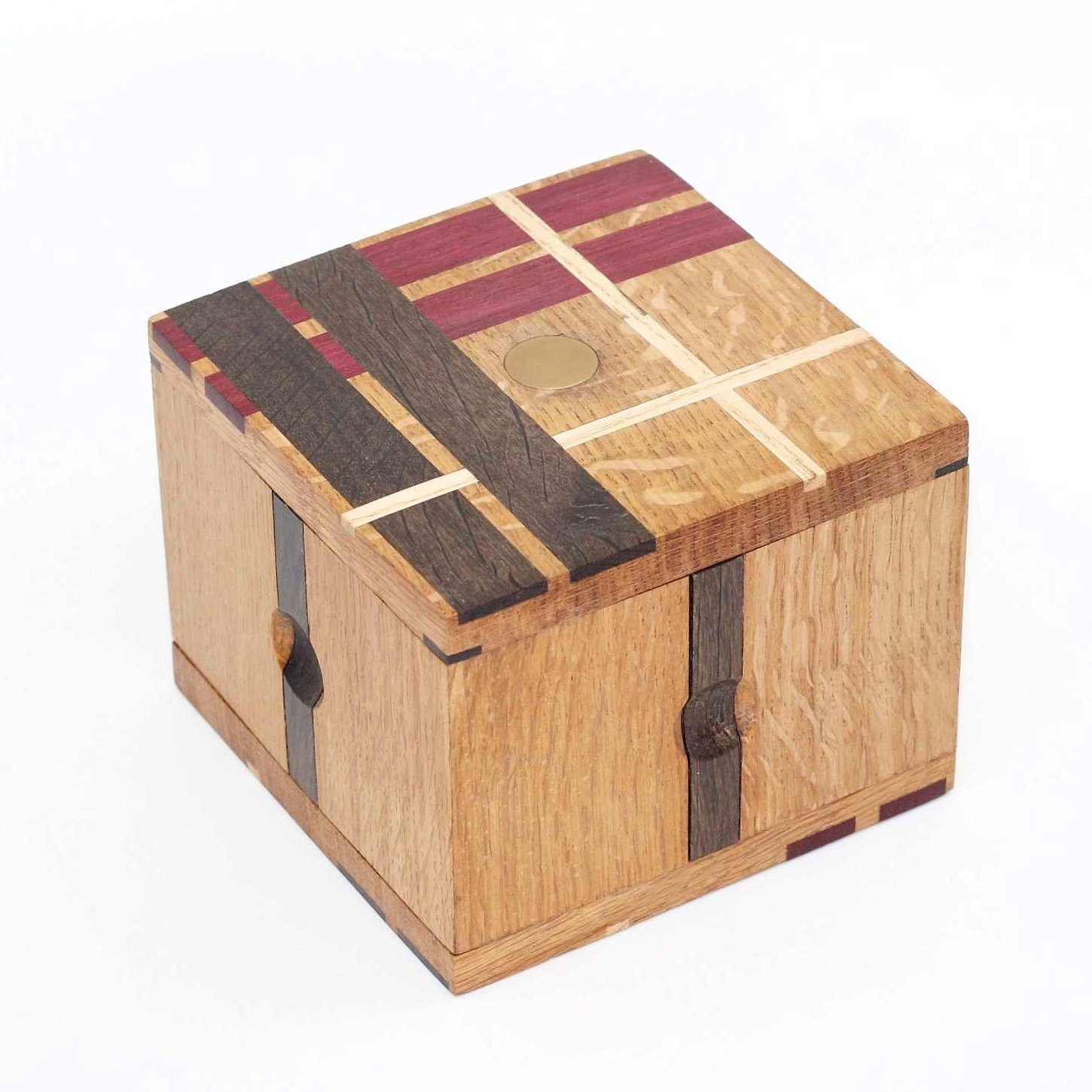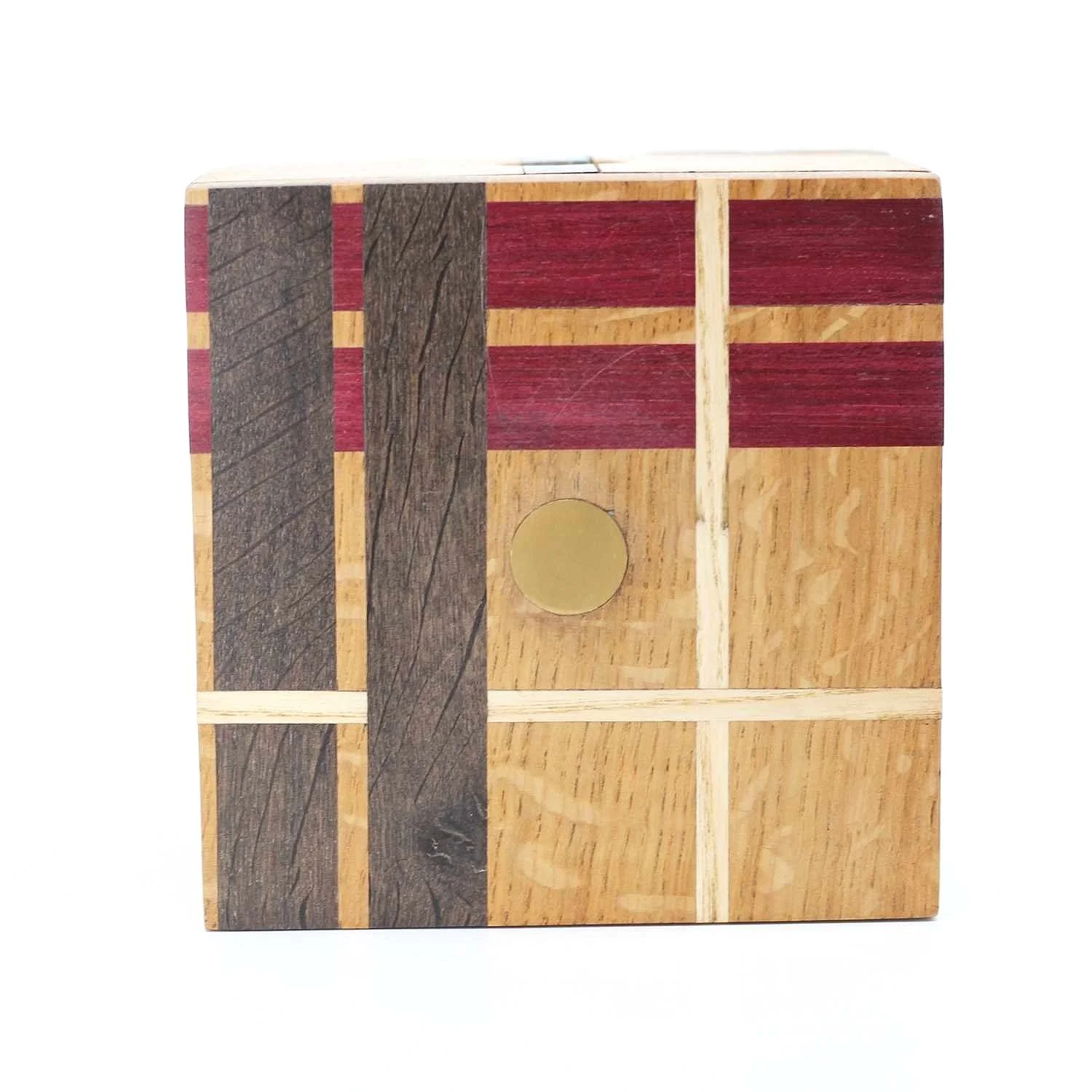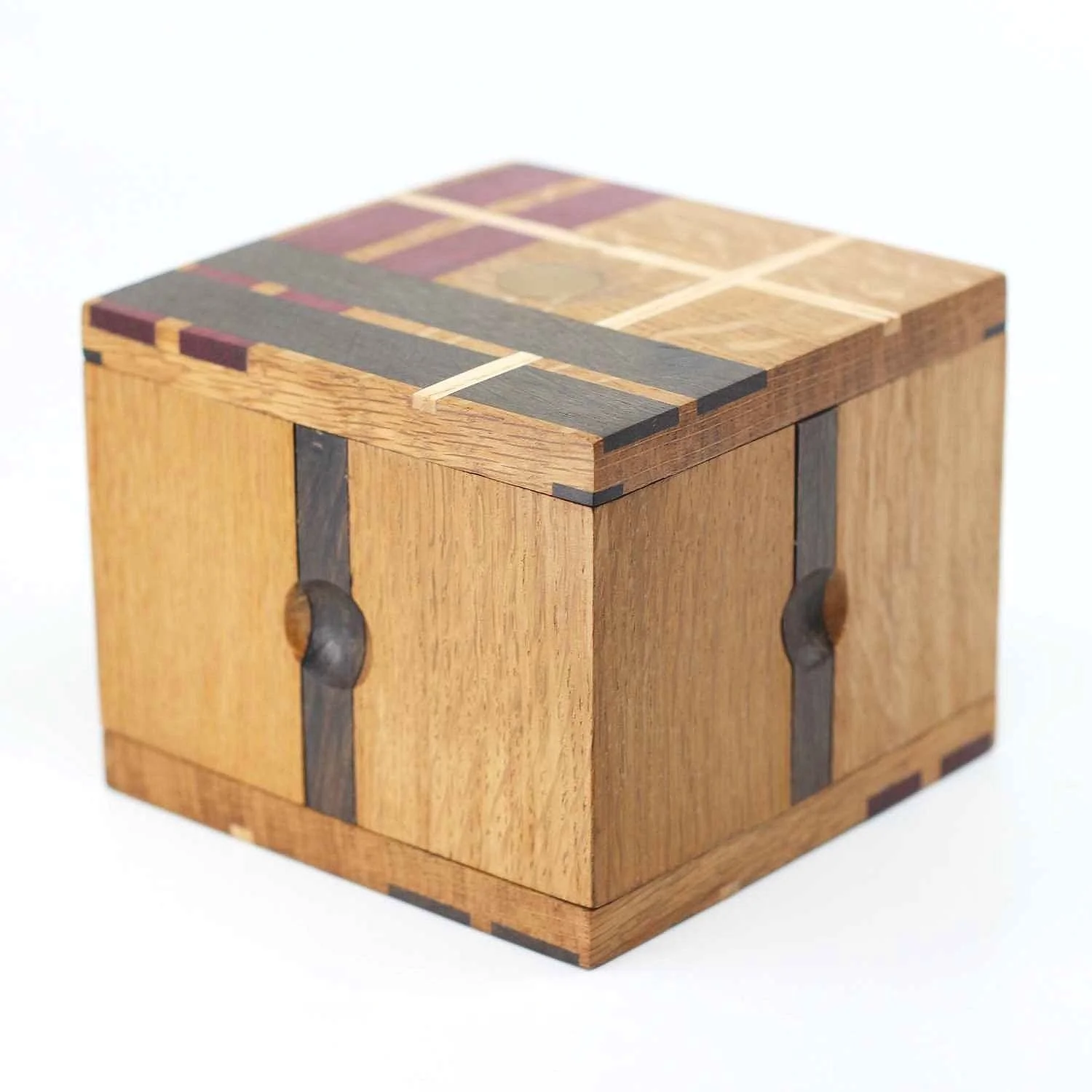Tartan Box
Dydd Gŵyl Dewi Sant
"Brothers be ye constant. The yoke which with single mind ye have taken, bear ye to the end; and whatsoever ye have seen with me and heard, keep and fulfil." – St. David, c. 589 AD
Tartan Box by Peter Canham
Dewi Sant (St. David), the patron saint of Wales, lived a pious and ascetic life (despite being born of royalty) in the sixth century and is famous for establishing numerous Celtic monasteries throughout the region including Glyn Rhosyn (The Vale of Roses). He was canonized by Pope Callixtus II in the twelfth century and ever since, the Feast of St. David is celebrated in Wales (and around the world) on March 1, the day of his death in 589.
Off kilter
Here’s a puzzle box for the celebration, the Tartan Box by Welsh artist Peter Canham. Peter explains that the box was designed for his (other) good friend Steve on his 50th birthday. Peter’s friend is Scottish, and technically the Tartan Box has a Scottish theme, but the Welsh wear tartans, too, so don’t get all out of kilter. From Peter: “For many years Steve has organised events where a group of us get together and he sets up a ‘wide game’ (not sure if you have that term in the US but it’s basically a game that uses a wide area and many participants). The games involve treasure hunts, dressing up, technical challenges and puzzle solving. … So for Steve’s birthday we organised a treasure hunt in Cardiff with clues given out by bar tenders, shop keepers and hidden in museums. The final clue was hidden in the Tartan box and led him to a bar on the harbour where he had to order a whiskey and received a particularly nice bottle of single Malt. A fabulous day out with family and friends but it took all of them to finally solve the box as it got handed around.”
it puts the art in tartan
As you can see, Peter is a lot of fun to hang out with, when he’s not off building architecturally stunning treehouse dwellings that can be booked for the most unusual off the grid forest adventures. He also happens to make great puzzle boxes, with intentionally varying levels of difficulty. He rates Tartan Box in the mid-range of difficulty, although it reportedly proved much harder than expected for the group that day. The box is beautifully crafted from home-grown Welsh woods (except for the Purpleheart, used to add color) which Peter cut and milled himself including Welsh Oak, Welsh Bog Oak and Ash, and has a Birch inner lining and a bit of brass accent. The tartan pattern inlay was for his friend but also serves a structural purpose, as it crosses the wood grain to prevent warping. Steve and Peter studied industrial design together, so Peter wanted the box to appear to have a fairly simple solution, but actually require a fairly good understanding of mechanics to solve. The box does not disappoint, and hides a very clever secret and misdirection which will keep you guessing and leave you very satisfied.
Prince of Wales c. 1860
Once you can accept the universe as matter expanding into nothing that is something, wearing stripes with plaid comes easy. - Albert Einstein
A toast to the Tartan Box then, my friends. Let’s raise our glass on St. David’s Day with none other than the Prince of Wales himself – or, at least, his cocktail. This classic cocktail is credited to King Edward VII, from when he was still Prince Albert Edward and fondly known to royalty as “Bertie”. That he would invent a cocktail comes as no surprise – he was “heir apparent” for almost sixty years thanks to his mother Queen Victoria’s very long rule. He lived a fashionable life in high society, and was the first British royal to visit North America in 1860, during the cocktail’s golden age, where he would undoubtedly have been introduced to the “Improved Whiskey Cocktail”.
regal recipe
The Prince’s drink is made with a base of (preferably) spicy rye whiskey, although some recipes call for cognac. Typical of many classics of the era, and clearly influenced by the Improved Whiskey, there are added subtle hints of flavor and sweetness here that transport it. The cocktail historian David Wondrich sums it up nicely in his classic book “Imbibe!”: “a little rye whisky, crushed ice, a small square of pineapple, a dash of Angostura bitters, a piece of lemon peel, a few drops of Maraschino, a little champagne, and powdered sugar to taste.” Any regular cocktail which has champagne poured on top can be called a ‘royale”, a term used to indicate that sparkling crown of embellishment. This cocktail is literally a royal royale - Iechyd da!
tandem tartans
Nowhere beats the heart so kindly as beneath the tartan plaid! - William Edmondstoune Aytoun
Prince of Wales c. 1860, adapted by David Wondrich
2 oz rye whiskey
1 tsp Maraschino liqueur
1 tsp rich simple syrup
1 pineapple wedge
1 lemon peel
1 dash Angostura bitters
Dry Champagne
Muddle pineapple in a cocktail shaker, add remaining ingredients except champagne, and shake well with ice. Strain into a coup glass and top with champagne. Garnish with a lemon twist, orange wedge, or lemon wheel tartan.
Discover more from Peter Canham:






